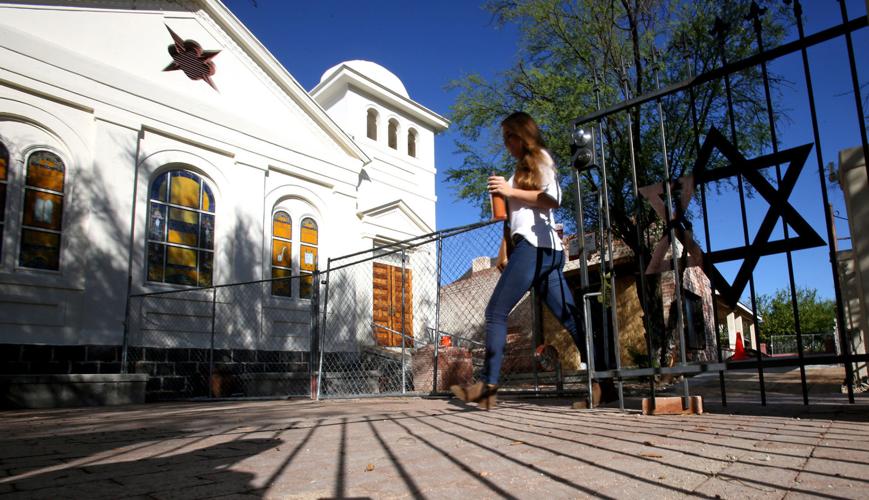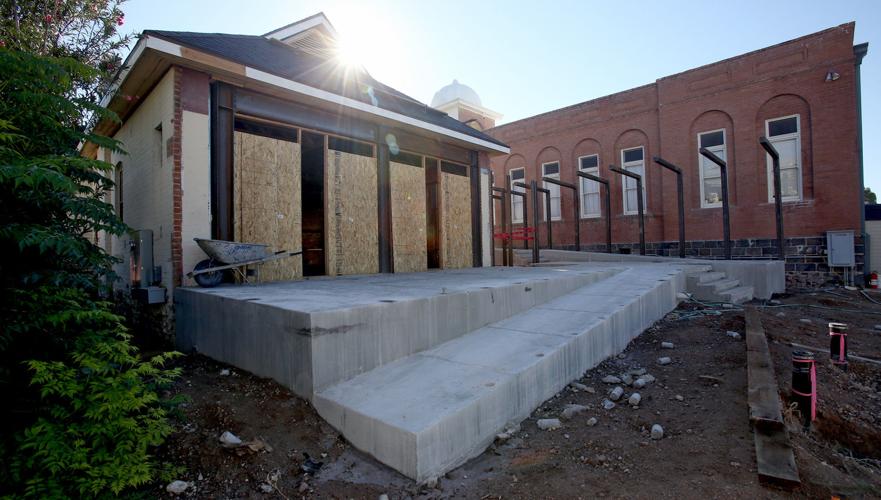With the reopening of the Holocaust History Center on Sunday, Barbara Brumer will see a photo of the aunt she was named for displayed from the ceiling of the renovated space.
That’s because the expanded center and surrounding gardens will tell a more complete story of the Holocaust and its connection to Southern Arizonans.
The original 400-square-foot space that opened in October 2013 and closed last spring for renovations primarily showcased local survivors. The center said about 260 survivors from 18 countries settled in Southern Arizona following the Holocaust.
And while the new 2,000-square-foot exhibit still focuses on those stories, it also pays tribute to loved ones locals lost by displaying their photos in the rafters.
“We have the space now to tell the Holocaust story,” said Brumer, the president of the Jewish History Museum Campus’ board of directors. “But we can also link it to the whole discussion of genocide.”
In addition to an exhibit on the eight stages of genocide, a revolving display will focus on modern human rights issues — for now, the global refugee crisis.
“We can’t have this history presentation and not have it move our consciences in a way that we can go and take action when there are imperiled people in the world,” said Bryan Davis, the executive director of the campus.
The expansion also includes the addition of sculpture and memorial gardens that connect the Holocaust History Center with the neighboring Jewish History Museum, which was once the Arizona territory’s first synagogue back in 1910.
“It’s a whole campus,” Davis said. “It’s one continuous space to address Jewish history and culture. It’s a learning space, a space to enact memorial traditions.”
The expansion is a partnership between the Jewish History Museum and the Jewish Federation of Southern Arizona. Fundraising brought in 1.25 million for the project, and the campus has set up a fund to help schools pay for field trips to the museum, Davis said.
The Jewish History Museum, which displays the contributions of Jews to Tucson, is also getting an update with a collection of pieces by sculptor Jacques Lipchitz on loan from the University of Arizona Museum of Art.
In the months the original Holocaust center was open, it brought in 5,000 visitors. Expansion was always a hope.
For Brumer, the completion of this project is personal. Her father survived Auschwitz. She grew up hearing these stories and said collecting them now, while there are still survivors alive, is urgent.
“I think focusing on locals makes it real,” Brumer said. “Instead of something that happened to some people a long time ago and far away, when a survivor gets up there and tells a school child that she was there, that she lost her mother ... that makes it real.”






